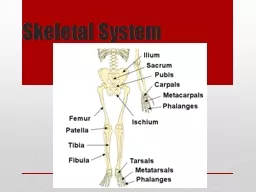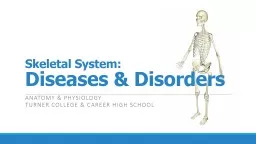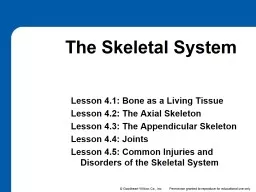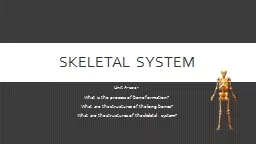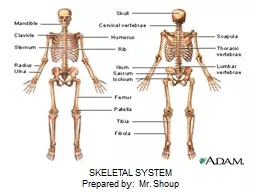PPT-Skeletal System Classification of Bone:
Author : cleverfan | Published Date : 2020-06-16
Bones vary in shape and size The unique shape of each bone fulfills a particular need Bones are classified by their shape as long short flat or irregular bone
Presentation Embed Code
Download Presentation
Download Presentation The PPT/PDF document "Skeletal System Classification of Bone:" is the property of its rightful owner. Permission is granted to download and print the materials on this website for personal, non-commercial use only, and to display it on your personal computer provided you do not modify the materials and that you retain all copyright notices contained in the materials. By downloading content from our website, you accept the terms of this agreement.
Skeletal System Classification of Bone:: Transcript
Download Rules Of Document
"Skeletal System Classification of Bone:"The content belongs to its owner. You may download and print it for personal use, without modification, and keep all copyright notices. By downloading, you agree to these terms.
Related Documents

